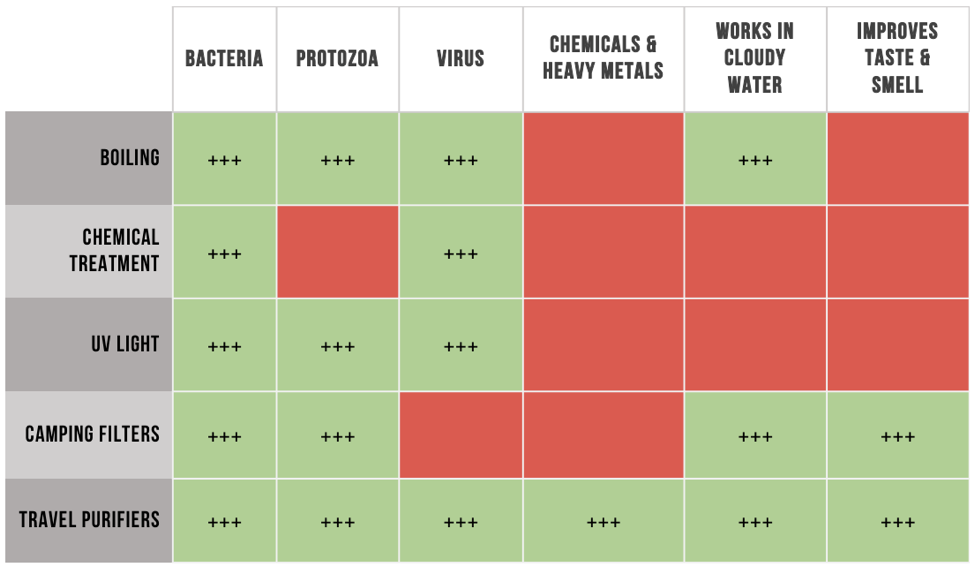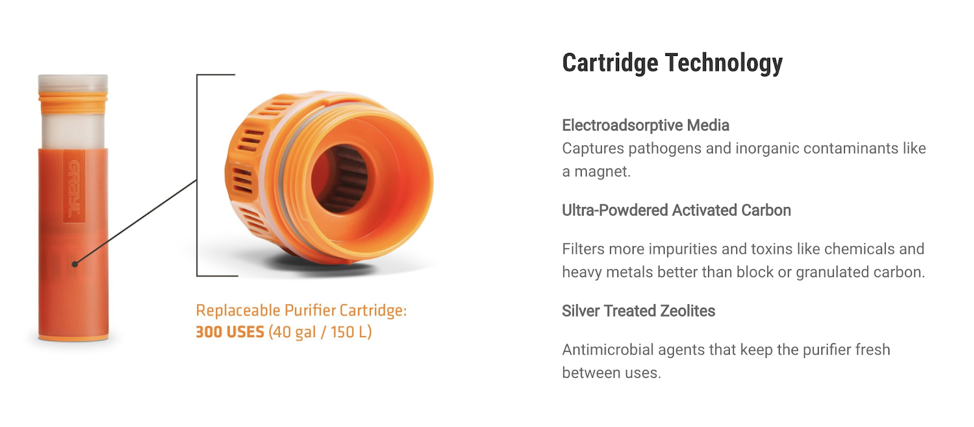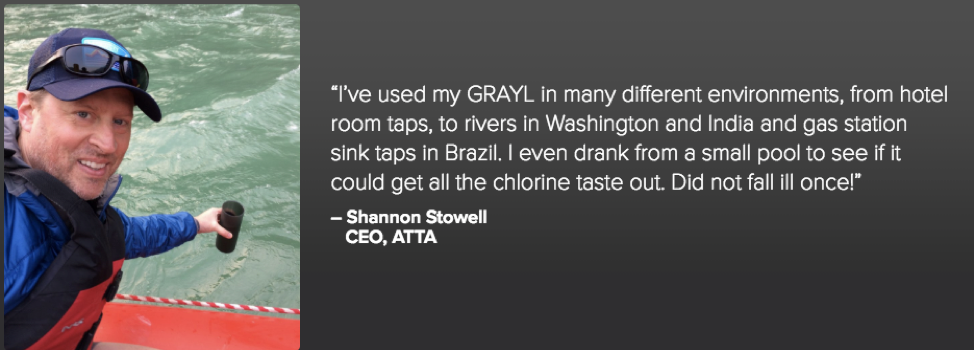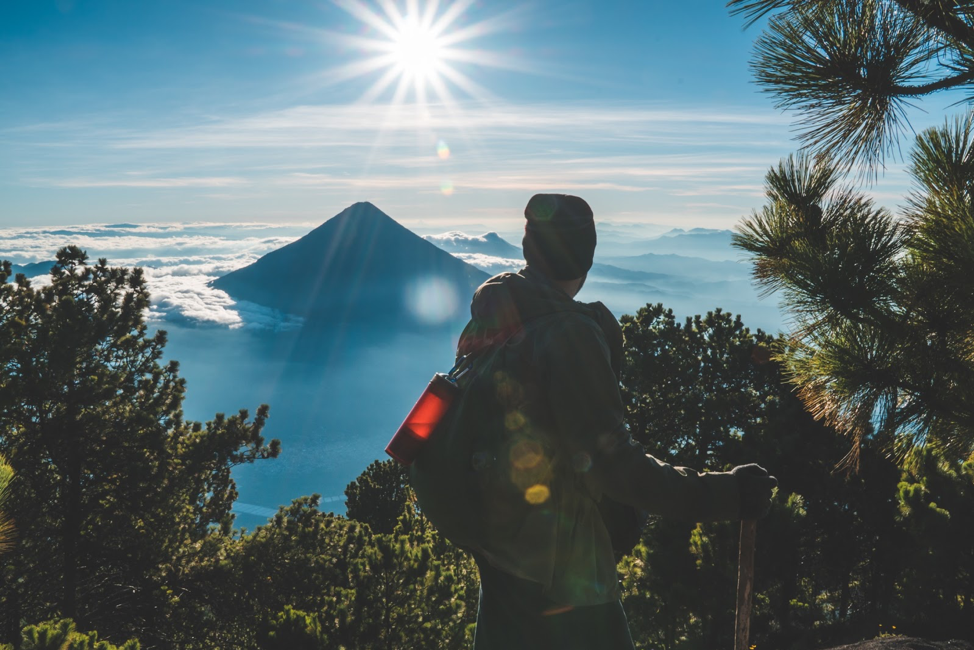Nothing ruins international travel adventure faster than a stomach bug. According to a 2015 article published in Australian Family Physician, 20-50 percent of travelers will experience travelers diarrhea (TD) as a result of ingesting unsafe food or water. To avoid joining the unfortunate statistics, it’s important for tour operators to learn the basics of waterborne pathogens and how you can help your clients (and yourself) avoid unnecessary and unpleasant toilet time.
How Do Operators Ensure Clients Maintain Good Health While Traveling?
First, take steps to educate yourself on waterborne illnesses and make sure your clients are well aware of the risks associated with a destination’s water quality. A good (albeit conservative) resource for information on water quality by country is the Centers for Disease Control and Prevention (check out this map graphic based on its information). Secondly, and most importantly, ensure you and your clients are informed about the risks before traveling and have convenient, self-reliant access to safe drinking water wherever the tour leads.
What Causes Traveler’s Diarrhea?
TD is most commonly caused by ingesting contaminated food or drink. In particular, water can be contaminated by three primary pathogens (aka “bad germs”):
1. Bacteria - Includes E. coli, dysentery, leptospirosis, typhoid, and salmonella.
Bacteria is the most common cause of TD, but bacterial illness usually only lasts a few days. However, if untreated, both dysentery and typhoid fever can be fatal. Luckily, virtually any water filter removes bacteria from drinking water.
2. Protozoa - Includes giardia and cryptosporidium.
A common fear of backcountry travelers, protozoa like giardia are usually not fatal but are certainly unpleasant. The small size and toughness of the protozoa eggs (cysts) make these pathogens more challenging to treat than bacteria.
3. Virus - Includes norovirus, rotavirus, hepatitis A, and SARS.
Viruses are the least common cause of TD but the most deadly of waterborne pathogens. Untreated, viral infections can cause serious harm and potentially be fatal. And unfortunately, viruses are the most difficult of pathogens to remove. Only a small percentage of water filtration systems available to travelers will capture these nasty culprits.
Safeguard Against Waterborne Illness Without Creating Plastic Pollution
For travelers, the most common way to ensure safe drinking water is to purchase water in single-use plastic bottles. Unfortunately, this solution has created a huge problem with waste and pollution in countries around the globe. Luckily, there are other ways to ensure your clients have access to safe drinking water wherever they travel — on and off your tour — and that’s with a personal water filter plus purifier.
While there are several methods and devices for treating unsafe water, it is important to understand the pros and cons for each and to choose an appropriate method of treatment. It is important to note, a water purifier is the only product that can protect against the broadest range of water contaminants. This is an overview of various methods and the contaminants removed, with green indicating “yes” and red indicating “no.”

Boiling
Pros: No special tools needed; kills all pathogens
Cons: Slow (including time to cool); doesn’t remove chemicals
Pros: Small and easy to carry; a great backup option
Cons: Does not kill protozoa (crypto, giardia); tastes bad; may not work in cold or cloudy water; slow (30+ minutes); does not remove chemicals
Pros: Small and easy to carry
Cons: Does not work in cloudy water; does not remove impurities and particulates; does not improve smell and taste
Pros: Available in several forms; light and small
Cons: Does not remove viruses; some do not remove chemicals
Pros: Removes all pathogens; some remove chemicals
Cons: More expensive than more basic filters
Trust Your Client’s Health to GRAYL Purifiers
GRAYL purifiers are designed specifically with the adventure traveler in mind and can create clean, safe drinking water from virtually any freshwater source in the world. With one press, the GRAYL purifier offers protection against viruses, bacteria, and protozoa while filtering out particulates, chemicals, and heavy metals, giving you safe, great-tasting water. When travelers opt to use a GRAYL Ultralight, one purifier cartridge can displace up to 300 single-use plastic water bottles.
GRAYL purifiers use the twin technologies of electroabsorption or ion exchange to capture and remove pathogens, and activated carbon to filter out chemicals and heavy metals and improve taste.

But don’t just take our word for it. GRAYL has been used in far-flung places across the globe.


GRAYL is offering members of the Adventure Travel Trade Association (ATTA) special discounted rates on co-branded purifiers as well as exclusive discount codes for your clients to purchase their own GRAYL purifiers. Learn more about these specials and the ATTA and GRAYL initiative to help travelers and tour operators reduce their dependency on single-use plastic water bottles and provide safe, convenient drinking water to their guests.
Ten percent of every co-branded purifier sale is donated to the Adventure Travel Conservation Fund (ATCF) to support its work protecting international environmental and cultural resources in travel destinations. GRAYL believes it is important to conserve the places we all love to travel to and play in.
